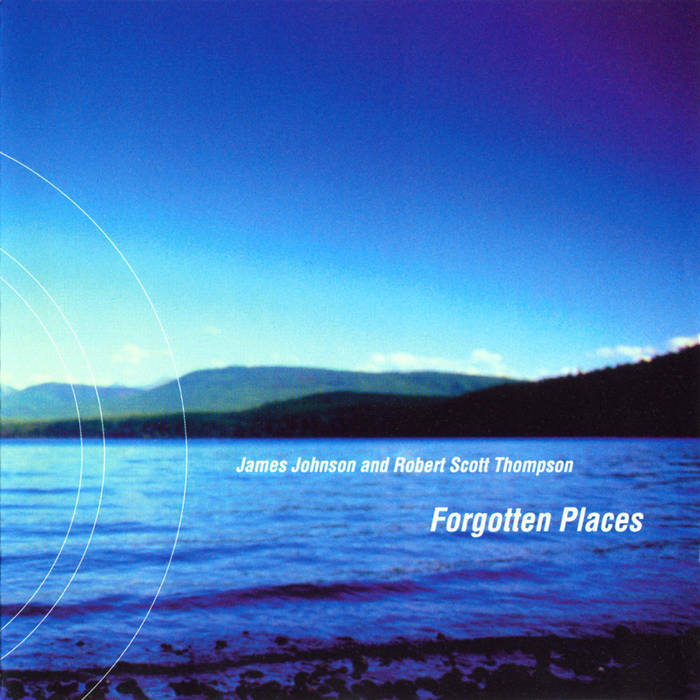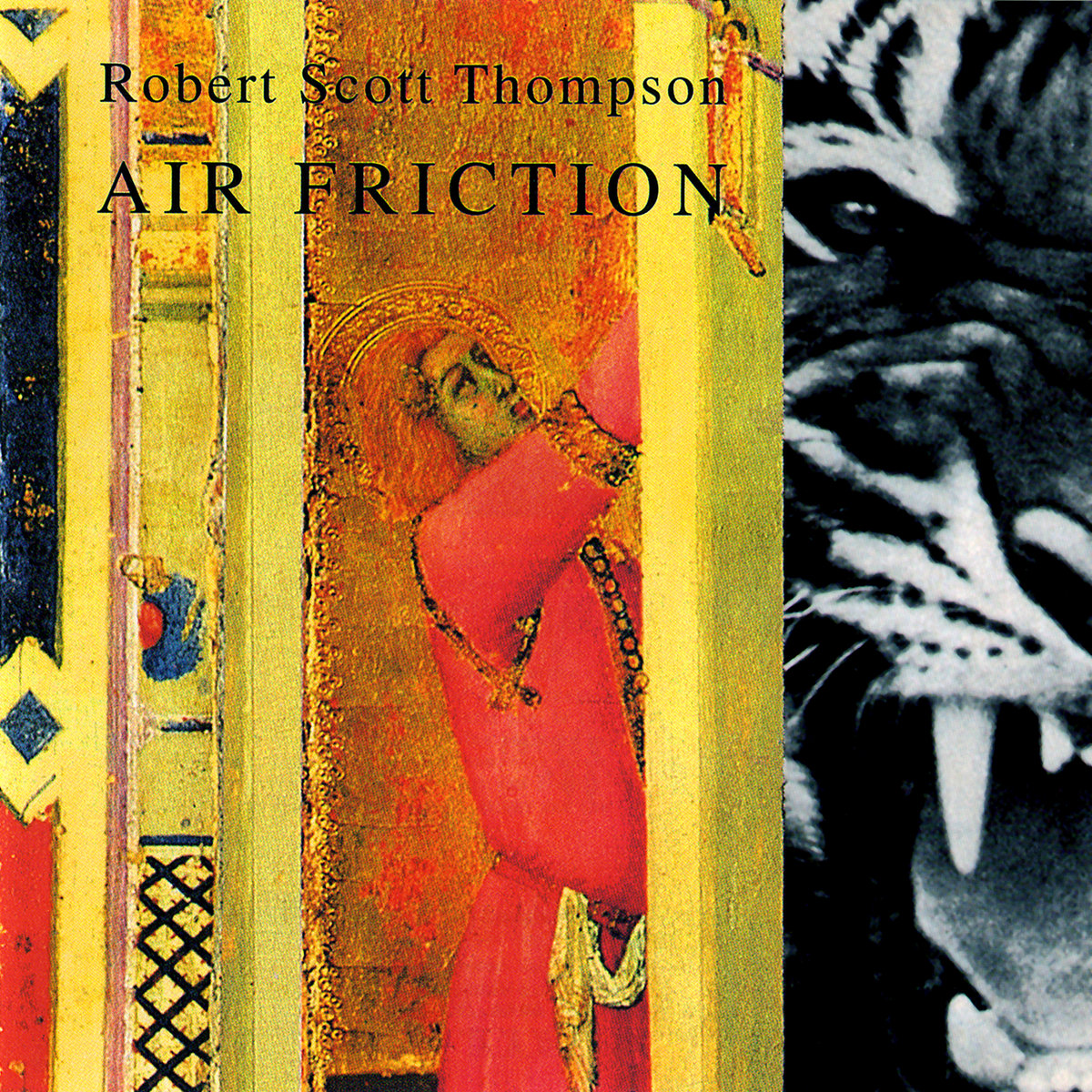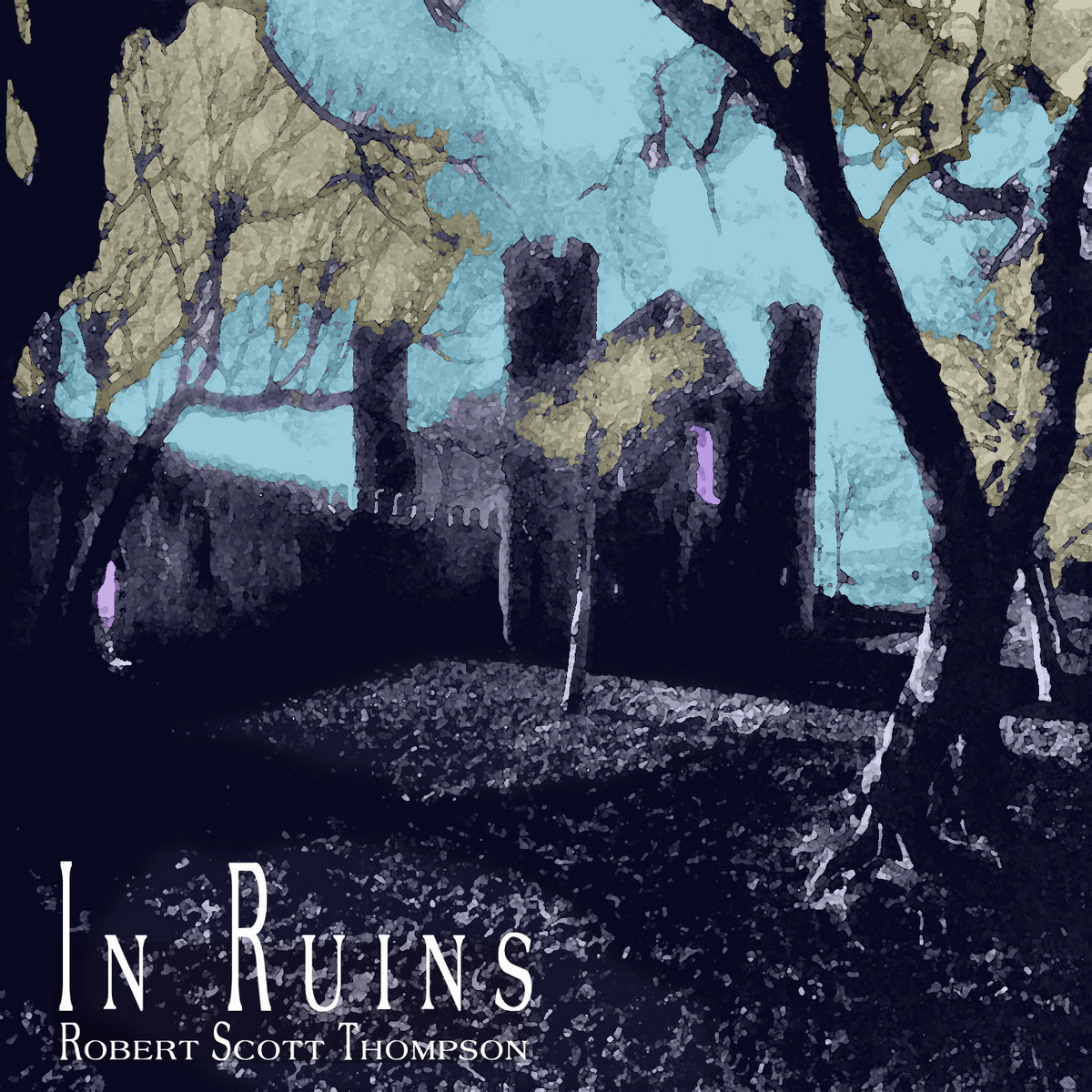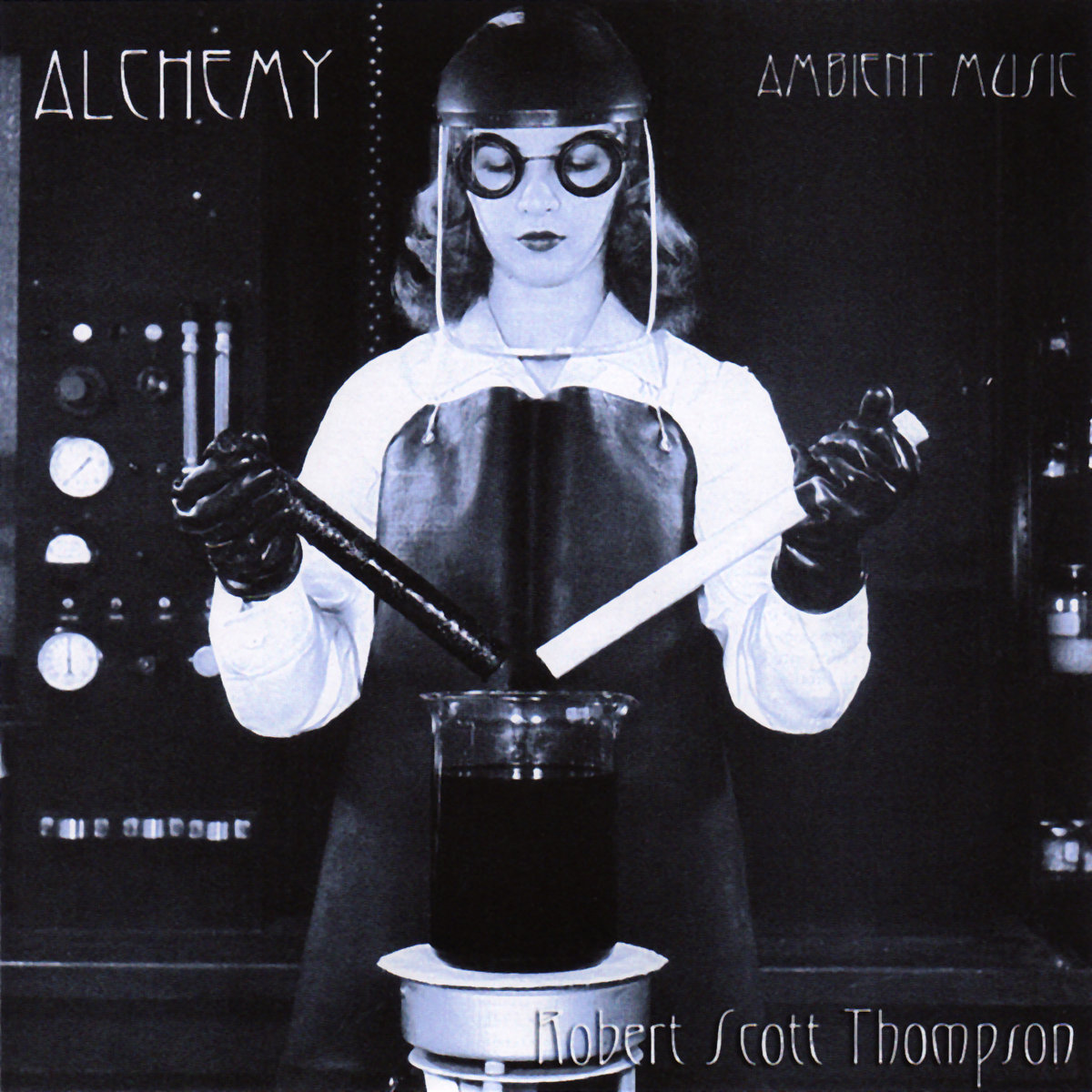Listen to
The Silent Shore

The Silent Shore (1996) — Robert Scott Thompson — Ambient Music
This album is considered a 90’s ambient classic for good reason as it has held up very well over the years. Great use of light and dark textures, and more variety than you would expect. Great album!
— Patient OT
...a contemplative, dream space masterpiece...
Considered by many to be a “classic” of the modern ambient genre, The Silent Shore has received numerous accolades. This disc is cherished by connoisseurs of the genre, and is a landmark recording in the opus of Robert Scott Thompson. The Silent Shore established RST as a leading figure in the ambient and electronic music scene, and has been heard worldwide in broadcast. The disc is currently available in its original packaging as published by Oasis/Mirage in 1996.
The Silent Shore is a contemplative, dream space masterpiece.
— The Organization of Sound
definitely one of Thompson's best...
This is definitely one of Thompson’s best CDs. A landmark in the genre!
— All Music Guide
This work is a masterpiece of atmospheric ambient.
Robert Scott Thompson has the ability to take one through textures of soundscape into worlds of the imagination. Although there is almost a consistent mood of the melancholy sublime, the flow is complex, and touches both the dark and the light. There is a journey through space and time that is both familiar and mysterious. Sometimes the sounds are worldly, other times they are otherworldly. This work is a masterpiece of atmospheric ambient.
— from Amazon UK
...wonderful, thoughtful, and provocative pieces of sound-art...
Firstly, listening to Robert Scott Thompson’s music has been a pleasing experience since the first time I heard his music on Hearts of Space. I’ve come into a bit of a snag when it comes into reviewing Ambient / Spacemusic, because it seems like the best stuff is beyond words. But my job is to relate the same to the reader, the same enthusiasm that I have for a recording. I’m sure that I do the music no justice, but if I can motivate you enough to buy the recording or at least check it out, by what I’ve written then I’ve done my job to the best of my ability.
I want to go over Thompson’s 1996 release, The Silent Shore, and then 1998’s Frontier. Two splendid recordings that easily make Thompson one of the most criminally overlooked composers working in the Ambient genre today. I’ll start this with a quote from the liner notes of Thompson’s The Silent Shore. “From an aesthetic perspective I have been able to accept every sound as potential musical material. Contexts spring spontaneously, and the materials to fill them abound – even and most profoundly in silence.” I couldn’t put it better. His use of organized sound and silence is inspirational. The Silent Shore is a contemplative, dream space masterpiece.
There are quite a few artists that have inspired me to create; Robert Scott Thompson is one such artist. His music transcends time and space, the thing that Spacemusic and some forms of Ambient music are supposed to do. Anyone who reads my reviews will find that I like to use the word contemplative. Any music that is contemplative to me is at the very pinnacle of its art, from the perspective of listening to music. Contemplative music allows you to step into yourself, music that isn’t contemplative can be experienced, enjoyed, analyzed, and all of that. But contemplative allows you to step away from yourself, and know the world.
I’ll talk a little about Frontier now, another record that is absolutely wonderful. This is the first recording of Robert Scott Thompson’s that I was exposed to. It was the fall of 1998, and that recording struck me. When the package came from Mirage I was ecstatic to see it mixed in there, having forgot about it for a while. I put this recording in and played it, sitting thoughtfully and listening as if I were spending time listening to an old friend. Frontier takes up where The Silent Shore left off, yet it takes the listener deeper into the realms of thought and imagination.
These two records, for me, are wonderful, thoughtful, and provocative pieces of sound-art. I highly recommend getting these classic recordings if you haven’t already.
— The Organization of Sound
a superb electroacoustic isolationist album...
This is one of the first albums well known American ambient/electronic composer, Robert Scott Thompson has recorded outside the confines of his own label. It is on the superb Canadian label, Oasis Productions daughter label, Mirage. The Silent Shore is a dark evocative soundscape similar in feel and texture to the mid-eighties ambient works of Steve Roach and Kit Watkins. Throughout the album, Thompson’s brilliance is in his ability to utilise otherwise mundane and ordinary sounds and transform them into an amalgam of interesting musical tracks. ‘DreamSong’ opens and sets the musical scene: it is as if we were on a hill listening to the sounds of a distant ocean and, over a bed of hollow drones, faint melodies and disembodied timbres float by. The manipulation of the sounds and the ambience which creates much of the movement is a basis for all the tracks, and underlines the sources of the albums main thematic structures. This is a superb electroacoustic isolationist album: the fifteen tracks individually demonstrate Thompson’s control of the techniques and together they form a coherent and significant musical composition: while the method of each is unique. The album has a gentle, almost floating atmosphere which perfectly fits the title and cover art.
— Ben Kettlewell
as good as anything that has ever come out in ambient music...
Up until recently I was not aware of the music of RST, but I’m glad I have been introduced to it. I listen to this and I know this is as good as anything that has ever come out in ambient music, from a space music perspective. Think of your favourite Jonn Serrie cd, mix in the quieter moments of contemplations created by someone like Steve Roach, add a touch of Brian Eno from around Discreet Music, a healthy addition of atmospheres, and you might get an idea where this guy is coming from. I really like this, a lot.
This takes me back to a time when ambient music was really happening as an art form (for me anyway), the late eighties. Thompson is not averse to paying tribute to the so called pioneers, and I get the feeling from listening to this he has really spent a fair amount of time studying classic ambient albums by the above mentioned, and more.
Production on this is excellent, very spatial and you feel like you’re up there in the stratus just floating around and looking down on everything. By the looks of things Thompson has recorded six CD’s so far and I’m looking forward to discovering some of the other titles.
I read somewhere that ambient had died, and this kind of made me laugh somewhat because the whole idea of ambient music is stasis of one form or another. For those of you out there who feel they haven’t heard anything decent in ages, take some time out to explore this label and what it has to offer. There are some real gems on this and music this good should not go unnoticed. Mirage proclaim on their label that they aim to have the finest in ambient atmospheres. A tall order but judging by this they have succeeded admirably.
— Hans Stoeve – Power Spot – Australia
gorgeous drifting...
Before approaching the music one explores the packaging. A blue-mauve altitude shot (computer generated) of a darkening shore presents this disc in a minimal atmospheric cover, suggestive of some of the minimal reaches of the new age or ambience. The cover notes suggest other directions: ‘this album sonically explores both the darker, nether regions as well as the lighter, more stratospheric realms of the ambient genre’ which isn’t too bad, and implies a broad mood. Why anyone would continue with the statement ‘[hear] in his music the influence of the genre’s pioneers’ which suggests that what we are holding is a derivative product. Inside a biographical note lets us know Robert is an Associate professor in the Georgia State University School of Music (dry academics to follow?). His statement ‘I have been able to accept every sound as potential musical material’ leads us to believe we may get into the extreme. And indeed, the first track ‘Dreamsong’ (or first track of the presented sequence, two alternatives are offered) is Apollo-era Eno: a gorgeous drifting tone piece. The spirit of Eno is in fact heard throughout, long tones, metallic tinkles, vocal notes point us to ‘Music for Films’, ‘Thursday Afternoon’ and other longer ambient works. The 15 tracks have very genre names ‘shimmer upon the mirror pond’, ‘nightvision’, ‘still life’, ‘real and imaginary’ and so on, and are divided into three modules.
The first module (1 to 3) is glittering drifting ambience. Module two (4 to 9) introduces some rhythms, almost fragmenting in ‘erin outback’, which wander through the metallic sweeps and glimmerings (of the pond). There are some strong juxtapositions such as the shift between the minimal tones of the mirror pond into the harder voice-processed and tick-tock ‘chanter’ and into the piano of ‘edge of stillness’ which closes the module. The final module continues with little obvious change from the second – a little bit of playfulness in ‘the fragrance of the soul’ and perhaps more piano overall.
While we don’t reach the suggestion of unusual sound sources (or if they are unusual they have been computed away) the disc measures up to most of the promises suggested by the cover. We float through a sonosphere washed over by mood driven textures: reminding us of a lost Eno album. And while it is a satisfying journey, perhaps Thompson is still held too much under the thrall of the ‘genre’s pioneers’: his CV leads us to believe there may be some more personal experiments in there, which are hinted at in the more experimental ‘nightvision’ where ur-words and night calls form a fragmented work.
— Jeremy Keens – Ambience – Australia
I've yet to tire of this stunning album...
I don’t know what came over me the other day at Tower Records — I picked up a CD by some guy I’d never heard of, and felt strangely compelled to buy it. That CD was THE SILENT SHORE by Robert Scott Thompson, and it’s already GUARANTEED itself a spot on my TEN BEST OF 1996 list. The cover is a stark, blue and black horizon; the mood reminding me of “Stalker”, the melting colors of “The Magnificent Void”. The notes on the back made me hesitate, thinking perhaps I was picking up something a little too light and cheesy:
“This album sonically explores the darker, nether regions as well as the lighter, more stratospheric realms of the ambient genre. Ambient music fans will recognize that Robert Scott Thompson is firmly rooted in tradition, by hearing in his music the influences of the genre’s pioneers.” Darker regions? You bet, but beautifully dark, never grating or noisy. Lighter? The “lightest” track on this 70-minute CD is “Real and Imaginary”, where Thompson weaves layers of gurgling synths around a heavily processed, plucked guitar. Every now and then the pieces are rhythmic, such as the tribal “Erin Outback”, but even that piece takes off into a beatless soundscape that reminds me a lot of Roach’s “The Magnificent Void”. Unlike the “Void”, however, the tracks on THE SILENT SHORE are short (from the 1:13 “Edge of Stillness” to the 8:25 opener “DreamSong”), and can be taken in smaller doses. Even after several repeated listenings, I’ve yet to tire of this stunning album — and I’ve yet to try the 2 alternative playback orders that Thompson suggests programming into your CD player.
This is his latest album, released about 2 months ago. I’m looking forward to hearing Thompson’s earlier albums; if they’re just half as good as THE SILENT SHORE, they’ll be exceptional.
would be highly recommended if it arrived in a brown paper sleeve with no artwork...
How many great new titles can we all handle at once? Just when I was about to send this brochure off to the printer, “The Silent Shore” rolled in, and it simply had to be included. This is the first release on Mirage, the sub-label of Canada’s fine Oasis label. With a fine-tuned approach, fifteen well-conceived tracks, and just under seventy minutes running time, this album covers a lot of space, as it sonically explores the darker nether regions that will appeal to Steve Roach fans as well as the lighter, more stratospheric realms of the ambient genre. The blue-tinted jewel case and pristine packaging add to the mystique and connoisseur feel of this release. But ultimately it’s the music that matters, and this would be highly recommended if it arrived in a brown paper sleeve with no artwork at all. Thompson’s background draws deeply from modern computer applications, sound analysis, synthesis and modification, but it is the human fabric and feeling that springs spontaneously from his multiple contexts that fills the space with a variety of perspectives, and, most profoundly, with silence.
— Lloyd Barde – Backroads
manages to unearth the dreams of the listener...
Ecco il disco ambient di cui Robert aveva parlato nell’intervista concessa a DL. Artista prolifico e instancabile ricercatore, Robert ha provato un pò di tutto, dal pop elettronico alla new age, dall’ambient alla computer music, e la sua folta discografia (più di 20 opere tra nastri e Cd) è testimonianza di grande vitalità. Come ebbi modo di dirgli, però, la musica ambient profonda e subliminale è certamente quella che gli si addice di più, quella che meglio riesce a disseppellire i sogni di chi ascolta: è un’ambient classicissima che pesca dalla gloriosa tradizione del genere, senza tentare esperimenti o introdurre novità, e che scorre uguale a sé stessa per tutta la durata del disco. I suoni sono levigati e nitidi e la produzione valorizza ogni sfumatura del suono. C’è anche un’originale proposta per una fruizione alternativa della musica: due diverse sequenze di ascolto dei brani da programmare sul lettore per ottenere un’atmosfera “opaca” oppure “cristallina”. La musica è estremamente indicata per viaggi molto personali. E’ il miglior disco di Robert, e uno dei più belli sulla strada aperta da Brian Eno.
— Gianluigi Gasparetti, Deep Listenings
***
Here is the ambient record that Robert had talked about in the interview granted to DL. A prolific artist and tireless researcher, Robert has tried a little bit of everything, from electronic pop to new age, from ambient to computer music, and his large discography (more than 20 works including tapes and CDs) is evidence of great vitality. As I was able to tell him, however, the deep and subliminal ambient music is certainly the one that suits him best, the one that best manages to unearth the dreams of the listener: it is a very classic ambient that draws from the glorious tradition of the genre, without groped experiments or introduced novelties, and that runs the same as itself for the entire duration of the disc. Sounds are smooth and crisp, and the production enhances every nuance of the sound. There is also an original proposal for an alternative use of music: two different listening sequences of the songs to be programmed on the player to obtain an “opaque” or “crystalline” atmosphere. Music is extremely suitable for very personal journeys. It is Robert’s best record, and one of the best on the road opened by Brian Eno.
— Gianluigi Gasparetti, Deep Listenings
an enduring work that will satisfy space and experimental audiences alike...
A professor of music and acoustic researcher, Robert Scott Thompson has released a handful of albums reflecting a variety of styles on his own Aucourant Records. The Silent Shore is his first widely distributed album, released on the Canadian Oasis label’s newly established Mirage imprint.
On this album, Thompson experiments with sound in the context of atmospheric space music. Taking conventional strategies a step further with original techniques, The Silent Shore is a diverse and compelling work. The Silent Shore consists of fifteen tracks, arranged into three sections or “modules.” The first module is the most minimal, its celestial atmospheres alternating with moments of discord. Though Thompson employs a few clichéd synthesizer timbres on tracks like “DreamSong” and “Floe,” the layering of sounds produces very original results.
The second module is a bit more conventional. Percussive rhythms drive “Erin Outback” and “Chanter,” while “Real and Imaginary” and “Shimmer Upon the Mirror Pond” are highlighted by slow, gentle electric guitar melodies. The module concludes with “Edge of Stillness,” a short piano piece reminiscent of Tim Story.
The third module is the most accomplished section, taking the melodic and rhythmic sensibilities of the second into more experimental territories. Particularly intriguing is “The Fragrance of Soul,” a submerged piece with a loose melody sinking into deep drones and liquid percussion. The final track on the album, “Painting Evening Across the Sky,” places distant percussion amidst waves of sound for a pleasing conclusion. Displaying an attention to detail and creativity that is often unfortunately missing in much popular space music, Thompson has created an enduring work that will satisfy space and experimental audiences alike.
— Eric Prindle
warm vibrations and serene chordal structures...
According to the liner notes for “The Silent Shore,” Thompson is a Professor of Music at Georgia State University who has recorded several albums prior to the two in question. On his two albums for Mirage, Thompson has delved deeply indeed into the dark ambient school, producing two albums that are evolutionary steps forward on Brian Eno’s pioneering work. “The Silent Shore” is a very gentle album overall, featuring sound shaping on a very quiet level. Exploring the subtleties of textural music, we are treated to sonic journeys that speak of giant caverns, subterranean waterways, and the sounds of the subconscious. At such a level, the 15 tracks on this CD that add up to nearly 70 minutes seem to flow into one another, peaking above the warm vibrations and serene chordal structures at extremely rare times. Thompson’s strength is his ability to vary his tonal qualities from track-to-track, so that the tracks works well as individuals in addition to the album’s internal cohesion. There is even a suggested alternate tracking order, although I would suggest that one would have to play the CD a great many times to appreciate its nuances. Fortunately, its quality will have you returning for more.
Better yet is his newest release, “Frontier,” which all melts into one long 72-minute montage of ambient bliss. Thompson’s work here is more dynamic and abstract, its waves of sounds describing more than just its cover’s underwater city. There are ringing tones, muffled and muted patches that float gently on the surface of dead quiet, with monolithic structures that glide into the fabric. The many other structures show a knowledge of music that defies conventional description, hinting at hypnagogic imagery, incidental soundtrack music, and ancient genetic memory. Robert Scott Thompson looks well on his way to making an impact in the next decade.
— Expose Magazine
Very simply, a beautiful recording, and very highly recommended.
Unlike some “ambient” discs, this one has stood the ultimate test of numerous repeated listenings and has actually gotten better with each new listen. A new sound here, a new sound there, and nothing boring about this one. This CD tends to stray onto the darker side of the ambient genre, meaning that it may not be the best CD in the world to fall asleep to; there’s simply too much going on; too much to pay attention to. The music is very atmospheric and there is sometimes turbulence in the atmosphere. Very simply, a beautiful recording, and very highly recommended.
— CD Spectrum
perfectly based on the ambient tradition of Brian Eno, Robert Fripp and Steve Roach...
Un experimentado sintetista que presenta su sexto y séptimo álbum. Música ambiental, a veces oscura, a veces luminosa, pero siempre armónica y placentera. Dos discos perfectamente asentados en la tradición ambient de Brian Eno, Robert Fripp and Steve Roach. Recomendados.
— Margen Magazine – Spain
***
An experienced synthesizer presenting his sixth and seventh albums. Ambient music, sometimes dark, sometimes bright, but always harmonic and pleasant. Two albums perfectly based on the ambient tradition of Brian Eno, Robert Fripp and Steve Roach. Recommended.
Ambient masterpiece...
Ambient masterpiece…
I bought this CD with almost no expectation and with doubts… and I was wrong! This is one of the best albums I own in my ambient collection. Robert Scott Thompson is a composer as good as masters like Eno, Roach, Rich and Stearns and is firmly rooted in the same tradition and style. If you like atmospheric-ambient music with a touch of experimental, this one is for you.
Recommended???
OH YES! Indeed!
— A music fan from Québec, Canada
a landmark in the genre...
The Silent Shore found Robert Scott Thompson firmly entrenched in the minimalist ambient movement of the late ’90s. Indeed, it was the first release on Mirage, a subsidiary of Oasis. That subsidiary, founded by Grant MacKay, aka Stephen Bacchus, professed to release “the finest in ambient atmospheres.” That statement rings very true here. |
This album demonstrates, quite clearly, the possibilities and probabilities of atmospheric minimalism. At the time of release, minimalists had caught up with some of Thompson’s techniques and ideas. This deep and introspective set was, however, very much ahead of its time. Most minimalists in the late ’96 were still very involved with and focused on the darker sides of ambient soundscapes. Thompson has spent some time in that realm himself and goes there again on this album. However, there is an equal amount of effort and energy devoted to some cheerful, almost pastoral, sound worlds. Thompson acknowledges those differences by suggesting two alternate playback sequences — “Opaque,” focusing on the darker compositions, and “Translucent,” highlighting the brighter side.
This is definitely one of Thompson’s best CDs. It is very accessible and a landmark in the genre. At that, it is still not his best work.
— All Music Guide
Beauty beyond belief!
This is stunning music, and anyone comparing it to the best of Eno, Budd or some less obvious “ambient” composers, like my own absolute favourite, Vangelis, is not too far off the mark. With this work, RST creates a cornucopia of almost frightening sensuality, and I, for one, had my life gilded by it.
— Great Attractor
the best ambient album ever...
— RENZO PERESSI
Perfect...
Nothing is filler here.
Fans of Steve Roach and Robert Rich absolutely MUST check out this awe-inspiring music by Robert Scott Thompson. Thompson claims to accept every sound as potential musical material, though he also enjoys the use of silence. The sounds here alternate between light and dark, happy and moody. Unlike Roach and Rich, who have a tendency to express themselves in longer pieces, Thompson prefers to work with a musical idea richly for a few minutes, sometimes only a minute, and then move on to the next idea.
Thompson, a professor at the Georgia State University School of Music, shows his ability to paint ethereal soundscapes. At times he seems influenced by more well-known ambient artists, but at other times he actually transcends them. Even the arrangement of the disc is original.
It is divided into three modules, but also suggests trying two alternate playing orders, which apparently highlight certain moods, because some tracks are left out in the alternative suggestions. I’m looking forward to trying them out. The first three tracks have definite Roach influence, both other tracks have that Rich tribal sound, and others are very Eno-esque, like the beautiful “Shimmer Upon The Mirror Pond.” Some songs are devoid of drums, while others, like “Chanter,” come at you full force, very much like Steve Roach’s World Edge CD. Nothing is filler here. Every track, whether one minute or six minutes, just seems to fit.
I very highly recommend this disc!
— Phil Derby – Dreams Word
subtleties of textural music...
On his two albums for Mirage, Thompson has delved deeply indeed into the dark ambient school, producing two albums that are evolutionary steps forward on Brian Eno’s pioneering work.
“The Silent Shore” is a very gentle album overall, featuring sound shaping on a very quiet level. Exploring the subtleties of textural music, we are treated to sonic journeys that speak of giant caverns, subterranean waterways, and the sounds of the subconscious. At such a level, the 15 tracks on this CD that add up to nearly 70 minutes seem to flow into one another, peaking above the warm vibrations and serene chordal structures at extremely rare times.
Thompson’s strength is his ability to vary his tonal qualities from track-to-track, so that the tracks works well as individuals in addition to the album’s internal cohesion. There is even a suggested alternate tracking order, although I would suggest that one would have to play the CD a great many times to appreciate its nuances.
— Peter Thelen – Expose
ambient lovers who have yet to discover this artist would do well to look into this work...
My first exposure to Robert Scott Thompson was under his Fountainhead moniker. This led me to email conversations with the artist and to his website where I found that his work had appeared on the syndicated U.S. radio show, Hearts Of Space. That show has always been an oasis in the wasteland of radio formats, in my opinion. (For those curious, www.hos.com had a net radio link and U.S. stations that carry the show.)
I found that RST’s first exposure there was from the disc The Silent Shore. At that point, I knew that I needed to get a copy and review it, and the fine people at Oasis Productions in Canada were quick to oblige me.
Frequently compared to “classic” ambient artists like Brian Eno, Thompson is firmly grounded in the ambient genre. I knew from earlier experience that he was a university professor at a school of music, so his credentials were impeccable. Often he produces recordings for his own Aucourant Records, but this venture was his first recording on the Mirage label.
The differences to other works I have heard were immediately obvious. For one thing there are a number of rather short tracks (the shortest 1:13) scattered amid those of medium length with the longest time being 8:25. These songs tend to get to the point and then move on. This contrasted strongly to other of his works that tend towards extended pieces as long as 18 minutes. Another difference is that several of these cuts have ethnic influences. Now I certainly wouldn’t call them worldbeat, yet “Erin Outback” has a definite tribal feel to the percussion and “Night Vision” brings to my mind Shinto priests. OK, I confess that I don’t know any Shinto priests, but still that’s the mental picture. In addition to the varied soundscapes, RST has created several interesting sonic effects as well. For example, “Chanter” has the definite feel of chanting Gregorian monks presumably without sampling. This line is found on the back of the CD. “This album sonically explores the darker, nether regions as well as the lighter, more stratospheric realms of the ambient genre.” Indeed the recording does cover much of the ambient range. Another interesting note on the label is the suggestion of “alternative playback orders” listed as Opaque and Translucent. These act as different road maps to the sonic landscape.
Classic ambient lovers who have yet to discover this artist would do well to look into this work.
— Loren Bacon – electronicshadows
RELATED RELEASES






Reviews